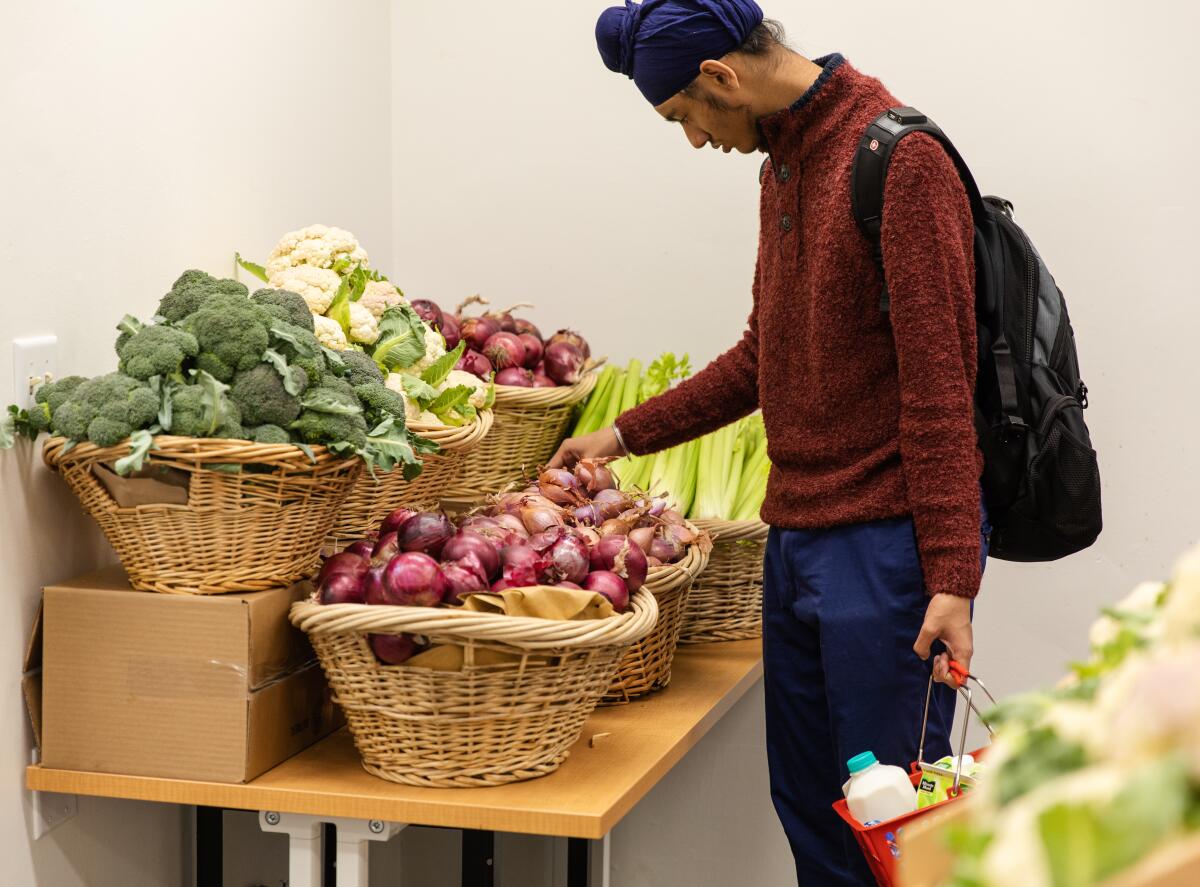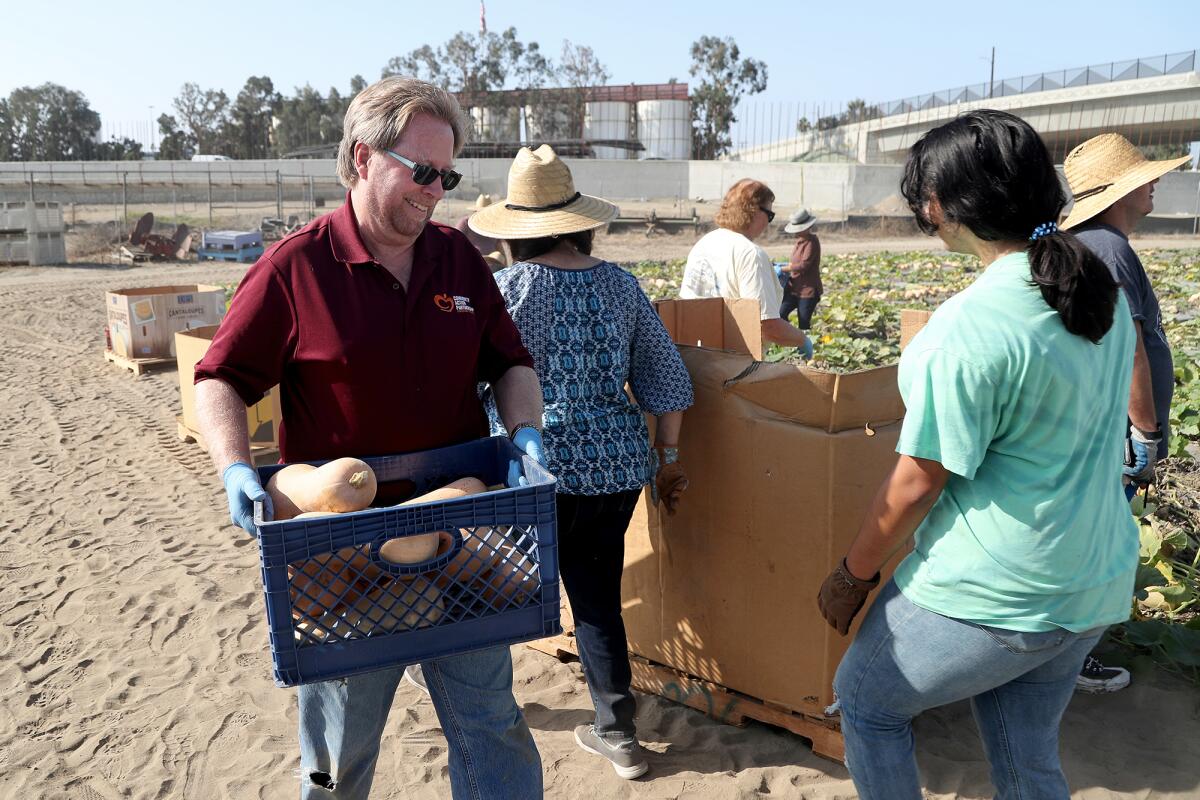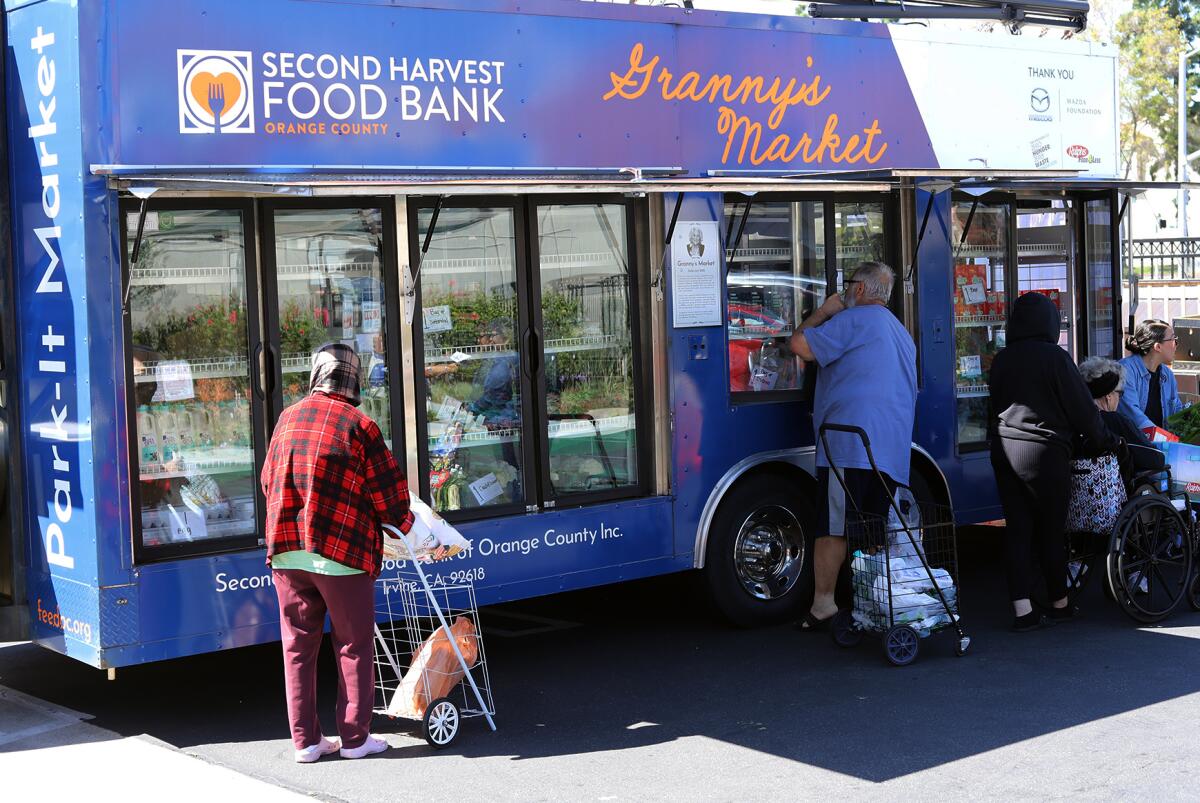OC Hunger Alliance releases findings on food security, nutrition and access

Orange County has been in a fortunate position, with two food banks to serve the needy among its more than 3 million residents.
The olive branch was extended when former Second Harvest Food Bank chief executive Harald Herrmann arranged to meet with Mark Lowry, the director of Community Action of Orange County’s OC Food Bank.
Herrmann approached the meeting with a spirit of collaboration, not competition. Lowry appreciated that.
He said there are often areas in California and elsewhere where two food banks saw themselves as competitors — at best.
“At worst, they’re at war with each other,” Lowry said. “To our credit, the two food banks have been polite and respectful and courteous toward one another. But Harald challenged me and said, ‘That’s nice, but it’s not good enough. This is an issue that affects all of Orange County, and we’re not sitting at that table together, agreeing on a strategy together about how to address hunger.’”

This discussion was the cornerstone for what became the Orange County Hunger Alliance, founded in 2020 during the coronavirus pandemic as a partnership between both of the local food banks and Abound Food Care.
Abound Food Care, the lead agency for the OC Hunger Alliance, is a nonprofit that also addresses food insecurity by examining food waste.
On June 13, nearly 200 cross-sector shareholders met at Dwelling Place in Anaheim to discuss findings from a new community needs assessment that examined the state of food and nutrition security in Orange County.
Claudia Bonilla Keller, who took over as the chief executive of Second Harvest in 2022, said many of the data points and conclusions in the survey reinforced what those in the industry already knew, regarding the importance of choice in food pantries.
“The old way, which really kind of hit its zenith during the COVID-19 pandemic, of handing somebody a box or a bag of food, really isn’t optimum in terms of dignity for people experiencing hunger,” Bonilla Keller said. “It’s also not optimum for reducing food waste, because if you don’t get to pick your food there’s a good chance there will be food that’s not appropriate for you or your taste.”

Along with choice of pantries, the survey highlighted the importance of good, nutritious food, including options that are rich in protein.
Lowry, who has been in the field for nearly 40 years, said the old adage used to be that people suffering from food insecurity should simply be thankful for what they get. But the switch to healthier options has come with the realization that the service provided is more long-term than short-term.
“By far the two largest populations we serve are seniors on fixed incomes and the working poor, people that are working at full-time jobs but simply aren’t earning a living wage and enough to meet the needs of their family,” Lowry said. “Those people are receiving food, maybe not just for a short period of time but on a consistent basis … and there are long-term consequences for people without protein in their diets, in terms of their health and life outcomes.”
Participants in the survey, conducted in collaboration with nonprofit Charitable Ventures and funded by the Orange County Health Care Agency’s Office of Population, Heath and Equity, included more than 189 community organizations and 811 Orange County residents. It touched on seven primary themes: demographics, utilization, capacity, referral services, unmet needs, barriers to access and areas of improvement.

More than half of respondents said they struggle to access benefits and services. According to the USDA Food Access Research Atlas, there were 74 low-income census tracts in Orange County in 2019, where a significant share of residents lived more than half a mile from the nearest supermarket. These areas, largely in central or northwest Orange County, made up 13% of the census tracts countywide.
The survey also showed that less than half of providers allow for food choice. The need for culturally appropriate food is another challenge.
The executives agreed that one of the initial barriers to food insecurity discussion is the perception of wealth in this county.
Another issue is that food insecurity isn’t always easily visible.
“There’s a segment of the population that is gainfully employed, they have mortgages, they have health insurance — and they’re food insecure,” said Mike Learakos, the Abound Food Care CEO. “The first thing you cut back on, the first thing you skip, is that one thing you need everyday. It’s food.”
Learakos said over a five-year period, 125 million pounds of food was recovered in Orange County. That’s food that used to be going to a landfill.

The OC Hunger Alliance also has new additions to its steering committee, including 211 Orange County, CalOptima Health, Meals on Wheels, Orange County Grantmakers and the Orange County Social Services Agency.
The group plans to take the survey results and keep working.
“The survey helped identify the ‘what,’ what the needs are,” Lowry said. “Now we have to start talking about the ‘who.’ Now that we’ve identified all of this stuff, who has the capacity to follow up on these recommendations, these identified needs, and how? Much of what was discussed costs money. One of the jokes in food banking is, it costs a lot of money to hand stuff out for free.”
All the latest on Orange County from Orange County.
Get our free TimesOC newsletter.
You may occasionally receive promotional content from the Daily Pilot.




